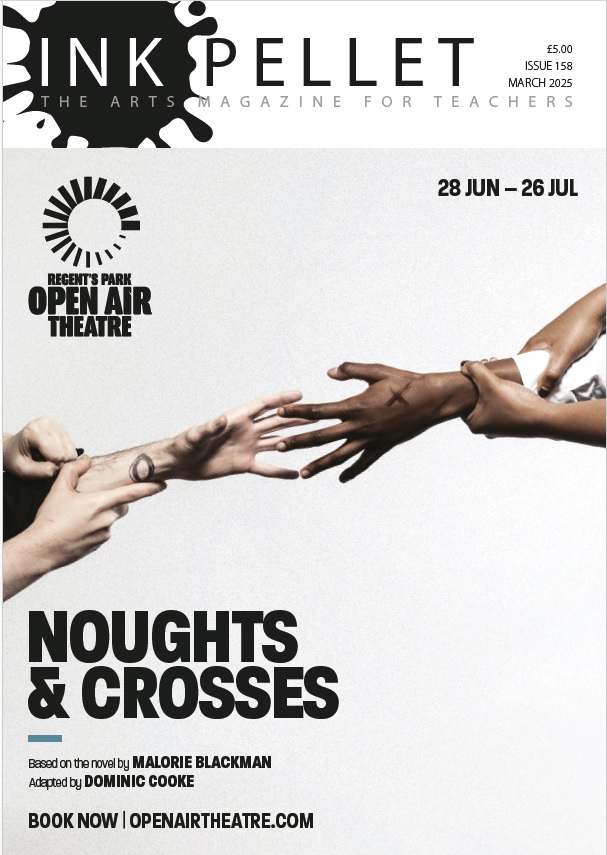Susan Elkin meets up with two of the leading actors in the latest revival of The Woman in White… and a dog.
Iam sitting in the bar at Charing Cross Theatre in the early afternoon. With me are two engaging men and a delightful dog named Peety. Tea is laid on for me along with snacks for my interviewees and, most importantly, a little saucer of labelled dog biscuits. Behind us we can hear The Woman in White rehearsing. Like all good shows it is continuously refined.
“Our director Thom Southerland is very relaxed and collaborative” says Chris Peluso who plays the villain, Sir Percival Glynde and owns Peety. “It keeps a show fresh if you’re innovative but it’s no good setting out to be ‘different’ for the sake of it. It’s essential that you remain true to your character and the situation he’s in”.
The creative process is continuous, they both stress. Ashley Stillburn who plays the good guy, Walter Hartright, quotes Joan Littlewood’s maxim: “Once a show is finished it’s dead.”
These two have worked together before and seem very comfortable in each other’s company. They joke that there’s a déjà vu dinner party scene in The Woman in White. “We did this scene in another show” they chuckle.
Chris is from Pennsylvania and trained in musical theatre at University of Michigan. He came to London (with Peety) originally to play Chris in Miss Saigon. “I liked it so much I’ve never left” he says. Since then he has toured with Sheridan Smith in Funny Girl and played Gaylord Ravenal in Show Boat amongst many other things. And when he visits home, Peety goes too. Quarantine laws necessitate circuitously returning to Britain via Canada and Paris. Clearly this King Charles Spaniel is a much-loved dog.
Ashley is a home-grown product from North Yorkshire. He trained at Guildford School of Acting where, he comments approvingly “Musical Theatre and acting students follow the same core programme in the first year so there’s a lot of emphasis on acting.” He has Phantom of the Opera, Les Miserables and Sweeney Todd under his belt.
The Woman in White is a revival of Andrew Lloyd Webber’s 2004 show at Palace Theatre. “It’s been substantially scaled down and completely re-imagined for this production” explains Ashley. “The cast and band are smaller and the orchestrations are simpler. The set operates without projections and revolve too.”
Chris continues “That is partly because we’re in a smaller venue, but the down scaling also helps to tell the story more clearly so there are very good dramatic reasons for doing it this way.” Andrew Lloyd Webber has taken a hands-on interest in the production as it has developed and has often suggested ways of simplifying it further.
Chris also points out that social things have changed so much since the novel – in many ways a fierce protest about the treatment of women – was written. And some of them don’t work in a modern context without off-putting didactic explanation. “My character for example has a shameful secret. In the novel it’s because he’s illegitimate. That obviously won’t resonate with most people in a 2017 audience so the secret has been changed to something a bit darker.”
Surely Wilkie Collins’s long novel tells an extraordinarily complicated story from multiple viewpoints? “Yes is does” says Ashley. “But when you dramatise a novel it has to be reinvented freely to make it work. For example, some of the characters in The Woman in White have gone and there are far fewer changes of location than in the novel. That helps to focus on the story telling and Thom is fiercely intelligent in the way that he makes it all work.”
What is it, I ask them both about nineteenth century novels which makes them such fertile ground for musicals such as Oliver! and Les Miserables? “I think it’s because of their descriptiveness”, Ashley says thoughtfully. “Those novelists were working in an era without TV, film, recordings, the internet and all the rest of it. They had to rely entirely on with words and they had free licence so any social comment they make is very clear. And that provides a very strong dramatic platform”
Chris suggests that audiences also like shows which spirit them off to another era. “And it works partly because shows like The Woman in White show just how far we’ve travelled. At the time of the novel – although Collins is obviously protesting – it was legal and acceptable for men to lock up their wives and expect them to sign legal papers unquestioningly. The character of Marion Halcombe, played by Carolyn Maitland in our show is a real prototype feminist. She refuses to sign – assertively and adamantly.”
And with that I bid farewell to two men, who have the next performance to prepare for, and a dog. The latter, I gather, is an experienced and patient dressing room dog who gets on well with the rest of the cast. I bet stroking him helps to allay stage fright too although he isn’t on the pay roll – yet.
The Woman in White runs at Charing Cross Theatre until 10 February.



